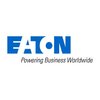
i
Adani
Group
Proud winner of ABECA 2025 - AmbitionBox Employee Choice Awards
Filter interviews by
Adani Group Mechanical Engineer Interview Questions and Answers
10 Interview questions
Torque is a measure of rotational force that causes an object to rotate around an axis, crucial in mechanics and engineering.
Definition: Torque is defined as the product of force and the distance from the pivot point (lever arm), expressed as τ = r × F.
Units: Torque is measured in Newton-meters (Nm) in the SI system, indicating the amount of force applied at a distance.
Applications: Commonly used in automotive eng...
Stress is the internal force per unit area in materials, while strain is the deformation resulting from that stress.
Definition: Stress is defined as force per unit area (σ = F/A), while strain is the measure of deformation (ε = ΔL/L).
Units: Stress is measured in Pascals (Pa) or psi, whereas strain is a dimensionless quantity (no units).
Types of Stress: There are different types of stress, such as tensile, compress...
The second law of thermodynamics states that entropy in an isolated system always increases over time, indicating energy dispersal.
Entropy Increase: In any energy transfer or transformation, the total entropy of a closed system can never decrease, leading to energy becoming less useful.
Heat Transfer: Heat naturally flows from hot objects to cold ones, not the other way around, exemplified by a hot cup of coffee co...
Pressure is the force applied per unit area, commonly measured in pascals, atmospheres, or psi.
Definition: Pressure is defined as the force exerted per unit area on a surface.
Units of Measurement: Common units include pascals (Pa), atmospheres (atm), and pounds per square inch (psi).
Measurement Instruments: Pressure is measured using devices like manometers, barometers, and pressure gauges.
Example: Atmospheric pre...
What people are saying about Adani Group






A four-stroke engine operates through four distinct strokes: intake, compression, power, and exhaust, converting fuel into mechanical energy.
Intake Stroke: The engine draws in a mixture of air and fuel as the piston moves down, creating a vacuum.
Compression Stroke: The piston moves up, compressing the air-fuel mixture, which increases its temperature and pressure.
Power Stroke: A spark ignites the compressed mixtur...
Mechanical engineering is a diverse field focused on the design, analysis, and manufacturing of mechanical systems and devices.
Design and Analysis: Mechanical engineers design machines and systems, such as engines and HVAC systems, using principles of mechanics and thermodynamics.
Manufacturing Processes: They oversee manufacturing processes, ensuring efficiency and quality in production, like in automotive or aero...
My favourite subject is Thermodynamics because I enjoy studying the transfer of energy and its effects on systems.
I find the concepts of heat transfer and energy conversion fascinating
I enjoy solving problems related to thermodynamic cycles and processes
I appreciate the practical applications of thermodynamics in engineering
For example, designing efficient HVAC systems or optimizing power plant operations
Material handling process using belt conveyor system involves transporting materials efficiently. The width and type of belt conveyor depend on the specific application.
Belt conveyor system is used to transport materials from one location to another in a production facility or warehouse.
The width of the belt conveyor depends on the size and weight of the materials being transported. It can range from a few inches ...
Mechanical engineering encompasses various branches focusing on design, analysis, and manufacturing of mechanical systems.
Thermodynamics: Studies energy transfer and conversion, essential for engines and HVAC systems.
Fluid Mechanics: Analyzes the behavior of fluids, crucial for designing pumps and turbines.
Materials Science: Focuses on the properties and applications of materials, important for selecting materials...
Strong problem-solving skills, attention to detail, communication skills, technical skills
Strong problem-solving skills are essential for analyzing and solving complex engineering problems
Attention to detail is crucial for ensuring accuracy in design and implementation
Effective communication skills are important for collaborating with team members and presenting ideas
Technical skills in areas such as CAD software,...
Adani Group Mechanical Engineer Interview Experiences
3 interviews found
I appeared for an interview in Jan 2025.
Send the mail in aptitude test
(2 Questions)
- Q1. Your favourite subject
- Ans.
My favourite subject is Thermodynamics because I enjoy studying the transfer of energy and its effects on systems.
I find the concepts of heat transfer and energy conversion fascinating
I enjoy solving problems related to thermodynamic cycles and processes
I appreciate the practical applications of thermodynamics in engineering
For example, designing efficient HVAC systems or optimizing power plant operations
- Q2. Any type of skills
- Ans.
Strong problem-solving skills, attention to detail, communication skills, technical skills
Strong problem-solving skills are essential for analyzing and solving complex engineering problems
Attention to detail is crucial for ensuring accuracy in design and implementation
Effective communication skills are important for collaborating with team members and presenting ideas
Technical skills in areas such as CAD software, prog...
(2 Questions)
- Q1. Are you interested job
- Ans.
Yes, I am very interested in this job opportunity.
I have a strong passion for mechanical engineering and enjoy problem-solving.
I am excited about the opportunity to work on innovative projects and contribute to the team.
I am eager to learn and grow in my career as a mechanical engineer.
- Q2. Relocate the job
Company and work details
I appeared for an interview in Mar 2025, where I was asked the following questions.
- Q1. What is the working principle of a four-stroke engine?
- Ans.
A four-stroke engine operates through four distinct strokes: intake, compression, power, and exhaust, converting fuel into mechanical energy.
Intake Stroke: The engine draws in a mixture of air and fuel as the piston moves down, creating a vacuum.
Compression Stroke: The piston moves up, compressing the air-fuel mixture, which increases its temperature and pressure.
Power Stroke: A spark ignites the compressed mixture, ca...
- Q2. What is the difference between stress and strain?
- Ans.
Stress is the internal force per unit area in materials, while strain is the deformation resulting from that stress.
Definition: Stress is defined as force per unit area (σ = F/A), while strain is the measure of deformation (ε = ΔL/L).
Units: Stress is measured in Pascals (Pa) or psi, whereas strain is a dimensionless quantity (no units).
Types of Stress: There are different types of stress, such as tensile, compressive, ...
- Q3. What is the second law of thermodynamics?
- Ans.
The second law of thermodynamics states that entropy in an isolated system always increases over time, indicating energy dispersal.
Entropy Increase: In any energy transfer or transformation, the total entropy of a closed system can never decrease, leading to energy becoming less useful.
Heat Transfer: Heat naturally flows from hot objects to cold ones, not the other way around, exemplified by a hot cup of coffee cooling...
- Q4. What is the difference between heat and work?
- Ans.
Heat is energy transfer due to temperature difference, while work is energy transfer due to force acting over a distance.
Definition: Heat is the transfer of thermal energy between systems, while work is the energy transfer resulting from a force acting through a distance.
Direction: Heat flows from a hotter object to a cooler one, whereas work can be done in any direction depending on the applied force.
Units: Both heat ...
- Q5. What is pressure, and how is it measured?
- Ans.
Pressure is the force applied per unit area, commonly measured in pascals, atmospheres, or psi.
Definition: Pressure is defined as the force exerted per unit area on a surface.
Units of Measurement: Common units include pascals (Pa), atmospheres (atm), and pounds per square inch (psi).
Measurement Instruments: Pressure is measured using devices like manometers, barometers, and pressure gauges.
Example: Atmospheric pressure...
- Q6. What is mechanical engineering?
- Ans.
Mechanical engineering is a diverse field focused on the design, analysis, and manufacturing of mechanical systems and devices.
Design and Analysis: Mechanical engineers design machines and systems, such as engines and HVAC systems, using principles of mechanics and thermodynamics.
Manufacturing Processes: They oversee manufacturing processes, ensuring efficiency and quality in production, like in automotive or aerospace...
- Q7. What are the main branches of mechanical engineering?
- Ans.
Mechanical engineering encompasses various branches focusing on design, analysis, and manufacturing of mechanical systems.
Thermodynamics: Studies energy transfer and conversion, essential for engines and HVAC systems.
Fluid Mechanics: Analyzes the behavior of fluids, crucial for designing pumps and turbines.
Materials Science: Focuses on the properties and applications of materials, important for selecting materials in m...
- Q8. What is torque
- Ans.
Torque is a measure of rotational force that causes an object to rotate around an axis, crucial in mechanics and engineering.
Definition: Torque is defined as the product of force and the distance from the pivot point (lever arm), expressed as τ = r × F.
Units: Torque is measured in Newton-meters (Nm) in the SI system, indicating the amount of force applied at a distance.
Applications: Commonly used in automotive engineer...
I applied via Recruitment Consulltant and was interviewed in Sep 2023. There were 3 interview rounds.

(2 Questions)
- Q1. Can you explain material handling process using belt conveyor system? what is the width & type of your belt conveyor?
- Ans.
Material handling process using belt conveyor system involves transporting materials efficiently. The width and type of belt conveyor depend on the specific application.
Belt conveyor system is used to transport materials from one location to another in a production facility or warehouse.
The width of the belt conveyor depends on the size and weight of the materials being transported. It can range from a few inches to se...
- Q2. Hydraulics & pneumatic questions about packaging system, load cell , optical sensors, fire fighting, OHS (they give a lot of importance to safety- read OHS,PTW system, W@H, Hot work safety, Fire Fighting, ...
(1 Question)
- Q1. Simple intro & other info, casual
Interview questions from similar companies

I appeared for an interview before Nov 2016.
Interview Questionnaire
3 Questions
- Q1. About yourself
- Q2. Will you work at any location
- Q3. Why you think you can work in any adverse situation
- Ans.
I have a proven track record of staying calm and focused in challenging situations, allowing me to problem-solve effectively.
I have experience working in high-pressure environments and have successfully delivered projects on time despite obstacles.
I am adaptable and can quickly assess a situation to determine the best course of action.
I have strong problem-solving skills and can think creatively to find solutions in ad...
Interview Preparation Tips
Duration: 1 hour
Total Questions: 100
Round: Group Discussion
Duration: 20 minutes

Interview Questionnaire
1 Question
- Q1. Normal question about personality and job related
Interview Preparation Tips
Experience: Interview was going smoothly & all questions was related my job so it's was easy for me.
Tips: Good knowledge about of wind turbine
Duration: 2 hours
Total Questions: 25
Round: HR Interview
Experience: Interview was completed so easy
Tips: Required nice personality and confidence is must required

I applied via Campus Placement
Interview Questionnaire
2 Questions
- Q1. Explain about your previous intern
- Ans.
I interned at XYZ Company as a mechanical engineer.
Assisted in designing and testing new products
Collaborated with team members to improve manufacturing processes
Conducted research on materials and their properties
Created technical drawings and schematics using CAD software
- Q2. Explain your family background
- Ans.
My family background is diverse and multicultural.
My parents are from different countries and cultures.
I grew up speaking multiple languages at home.
My family values education and hard work.
We have a strong sense of community and support for each other.
My grandparents were immigrants who worked hard to provide for their families.
Interview Preparation Tips
Experience: I had a decent resume and a good grade and hence was confident on getting through this phase.
Tips: Devote sufficient time for resume preparation and come up with a catchy resume that will ensure that you are shortlisted.
Round: Technical Interview
Experience: I had good knowledge of what I had done in my previous intern and elaborated the experience. I tried not to exaggerate and gave crisp answers only.
Tips: Be confident in what you utter.
Round: HR Interview
Experience: Based on previous candidates. I knew that the interview was long and took the freedom to presume it will be same for me and gave an elaborate answer.
General Tips: Be confident of your own profile and try to sell yourself as a product to them. Show your worth rather than your weaknesses in the front.
Skills: Course Grades, Enthusiasm
Duration: 2
College Name: IIT Madras
Motivation: I wanted to do a core intern and such a reputed company with versatile domains was a preferred choice.

I applied via AmbitionBox and was interviewed in Apr 2023. There were 2 interview rounds.

(2 Questions)
- Q1. What is tharmal power plant
- Ans.
A thermal power plant is a facility that converts heat energy into electrical power.
Thermal power plants use fossil fuels, nuclear energy, or renewable sources to generate heat.
The heat is used to produce steam, which drives a turbine connected to a generator.
The generator converts mechanical energy into electrical energy.
Common types of thermal power plants include coal-fired, gas-fired, and nuclear power plants.
Examp...
- Q2. Tharmal power plant efficiency how to work
- Ans.
Thermal power plant efficiency is the ratio of energy output to energy input.
Efficiency can be improved by using high-quality fuel and improving the combustion process.
Regular maintenance of equipment and proper insulation can also improve efficiency.
Cogeneration, where waste heat is used for other purposes, can increase efficiency.
Efficiency can be calculated using the formula: Efficiency = Energy output / Energy inpu...

I appeared for an interview in Mar 2025, where I was asked the following questions.
- Q1. What is working principle of transformer
- Ans.
A transformer operates on electromagnetic induction to transfer electrical energy between circuits at different voltage levels.
Consists of primary and secondary coils wound around a magnetic core.
Works on the principle of Faraday's law of electromagnetic induction.
When alternating current flows through the primary coil, it creates a magnetic field.
This magnetic field induces a voltage in the secondary coil.
Transformers...
- Q2. What's efficiency of transformer
- Ans.
The efficiency of a transformer measures how effectively it converts input power to output power, typically expressed as a percentage.
Efficiency is calculated as (Output Power / Input Power) x 100%.
Typical transformer efficiencies range from 95% to 99%.
Higher efficiency reduces energy losses, making transformers more economical.
Example: A transformer with 98% efficiency means 98% of input power is converted to output p...
- Q3. Types of generating power plants
- Ans.
Power plants generate electricity using various energy sources, including fossil fuels, nuclear, and renewables.
Thermal Power Plants: Use fossil fuels like coal, oil, or natural gas (e.g., coal-fired plants).
Nuclear Power Plants: Generate electricity through nuclear fission (e.g., plants using uranium).
Hydroelectric Power Plants: Utilize flowing water to generate power (e.g., Hoover Dam).
Wind Power Plants: Harness wind...
- Q4. What is hybrid system
- Ans.
A hybrid system combines different technologies or methodologies to leverage their strengths for improved performance and flexibility.
Hybrid systems can integrate both analog and digital components, such as in hybrid cars that use both electric and gasoline engines.
In computing, hybrid systems may refer to cloud computing models that combine public and private clouds for enhanced scalability and security.
In control sys...
- Q5. Types of transformer
- Ans.
Transformers are electrical devices that transfer energy between circuits through electromagnetic induction, with various types for different applications.
Step-up Transformer: Increases voltage, used in power transmission.
Step-down Transformer: Decreases voltage, used in power distribution.
Isolation Transformer: Provides electrical isolation, used in sensitive equipment.
Auto Transformer: Has a single winding, used for ...
- Q6. What's central inverter
- Ans.
A central inverter converts DC electricity from solar panels into AC electricity for grid use or consumption.
Central inverters are commonly used in large-scale solar power plants.
They are more efficient for larger installations compared to string inverters.
Examples include the SMA Sunny Central and ABB PVS series.
Central inverters typically require more space and are installed in dedicated areas.
They can manage multipl...

Discuss work related questions
(1 Question)
- Q1. Salary discuss and other accommodation
Interview Preparation Tips

I applied via Naukri.com and was interviewed in Mar 2021. There were 4 interview rounds.
Interview Questionnaire
4 Questions
- Q1. What are your roles in your current job
- Q2. How do you tackle vibrations in axial fans
- Ans.
To tackle vibrations in axial fans, proper balancing, alignment, and maintenance are essential.
Perform dynamic balancing of the fan blades to minimize vibrations.
Ensure proper alignment of the fan with the motor and the surrounding structure.
Regularly inspect and maintain the fan components to prevent wear and tear.
Use vibration analysis techniques to identify and address any potential issues.
Consider installing vibrat...
- Q3. What are the challenges you faced your job
- Ans. Explained about our ID fan hydro coupling issue
- Q4. What permit system do you follow
- Ans.
We follow a permit system based on the project requirements and local regulations.
Our permit system ensures compliance with safety standards and legal requirements.
We obtain permits for activities such as construction, electrical work, and hazardous material handling.
The specific permit requirements vary depending on the nature of the project and the location.
We work closely with regulatory authorities to ensure timely...
Interview Preparation Tips
Adani Group Interview FAQs
Tell us how to improve this page.
Adani Group Interviews By Designations
- Adani Group Assistant Manager Interview Questions
- Adani Group Deputy Manager Interview Questions
- Adani Group Electrical Engineer Interview Questions
- Adani Group Graduate Engineer Trainee (Get) Interview Questions
- Adani Group Electrical GET Interview Questions
- Adani Group Civil Engineer Interview Questions
- Adani Group Manager Interview Questions
- Adani Group Senior Manager Interview Questions
- Show more
Interview Questions for Popular Designations
- Senior Engineer Interview Questions
- Production Engineer Interview Questions
- Project Engineer Interview Questions
- Junior Engineer Interview Questions
- Electrical Engineer Interview Questions
- Service Engineer Interview Questions
- Site Engineer Interview Questions
- Maintenance Engineer Interview Questions
- Show more
Overall Interview Experience Rating
based on 5 interview experiences
Difficulty level
Duration
Mechanical Engineer Interview Questions from Similar Companies
Adani Group Mechanical Engineer Reviews and Ratings
based on 12 reviews
Rating in categories
|
Assistant Manager
883
salaries
| ₹8.2 L/yr - ₹15 L/yr |
|
Deputy Manager
573
salaries
| ₹11.3 L/yr - ₹19.5 L/yr |
|
Associate Manager
413
salaries
| ₹14.8 L/yr - ₹26.7 L/yr |
|
Senior Manager
231
salaries
| ₹22 L/yr - ₹36.9 L/yr |
|
Manager
230
salaries
| ₹19.8 L/yr - ₹32 L/yr |

Suzlon Group

Adani Power

NTPC

Torrent Power
- Home >
- Interviews >
- Adani Group Interview Questions













